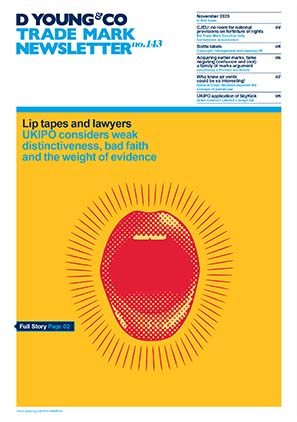Stitch incoming: TikTok loses UK High Court appeal
TikTok Information Technologies UK Ltd successfully challenged Stitch Editing’s application for the word mark STITCH in an opposition before the UK Intellectual Property Office (UKIPO). The UK High Court disagreed with the hearing officer’s assessment and allowed the appeal.
Background
Stitch Editing applied to register the STITCH word mark for various class 41 services, including music, video & TV editing, production/post-production services, as well as the provision of advice and information for music, video & film concept, and script development.
Claiming that the word “stitch” refers to the joining together of media in various contexts, TikTok persuaded the UKIPO that the application should be refused under sections 3(1)(b), (c) and (d) of the Trade Marks Act 1994, due to its non-distinctiveness, descriptive meaning, and common use.
The opposition succeeded in its entirety.
Appeal
On appeal, Stitch Editing argued that:
- the hearing officer had erred in treating all services in the same way, making no attempt to consider each separately;
- “stitch” doesn’t describe a particular kind of film and video production service, but a potential technique which might be used in the course of providing that service (if editing is involved); and
- there was an unaddressed question of whether a word descriptive of a technique within a service (or a word which is associated with a service) could be treated as being descriptive of that service per se.
Flawed findings
Sir Anthony Mann, sitting as a High Court judge, indicated that reasons for judgment can always be better expressed, and an appeal court should not subject a judgment to narrow textual analysis (as discussed in Volpi v Volpi). However, it was not clear how the hearing officer applied her finding about the meaning of the word “stitch” to each of the class 41 services covered by the application. The opposition decision did not explicitly state that the average consumer would understand the mark STITCH as describing the activities of each of the services in the specification.
The hearing officer also did not specify whether the mark was descriptive of those services as a whole or if it was descriptive of characteristics that the relevant services may optionally possess. This was important, as certain services did not contain an obvious “stitching” element (for example: providing advice and information for music, video and film concept and script development).
Accordingly, the judge found that the hearing officer’s section 3(1)(c) Trade Marks Act finding, in respect of descriptiveness, was flawed. Since the descriptiveness was linked to the hearing officer’s subsequent evaluation of the application’s non-distinctiveness, the High Court found that the section 3(1)(b) Trade Marks Act opposition ground also needed to be revisited.
In respect of the section 3(1)(d) Trade Mark Acts ground, the hearing officer had been satisfied that TikTok’s evidence showed the word “stitch” as being customary language in the photography, audio and video editing sector, including in the language of patent applications in those fields. However, the High Court found that the hearing officer failed to apply the section 3(1)(d) test to each of the individual services in the opposed specification.
Treatment of evidence
The High Court was also critical of the hearing officer’s approach to the applicant’s evidence of acquired distinctive character. The evidence had been set out without much commentary on its relevance or significance, and the hearing officer focused on only some of the factors that Stitch Editing had relied on. For example, she focused on some awards as being indicative of market share, whereas that evidence had in fact been submitted to demonstrate the existence of a link between the STITCH brand and the relevant services. Overall, the hearing officer did not approach the evidence in the right light.
But not all is lost for TikTok: the High Court remitted the opposition to the UKIPO for a fresh determination.
In short
Successful appeals from the UKIPO are rare. Appellants are often faced with an upward battle: an appeal is a review of the first instance tribunal’s decision, not a re-hearing of the dispute, which can be problematic where multifactorial and inherently evaluative assessments are involved. With this in mind, it is worth noting the judge’s comments about the hearing officer’s treatment of evidence and the court’s approach to the section 3(1)(c) Trade Marks Act test.
Case details at a glance
Jurisdiction: United Kingdom
Decision level: UKIPO
Parties: Jack & Victor Ltd v Jack Daniel’s Properties Inc
Citation: O/0453/23
Date: 15 May 2023

